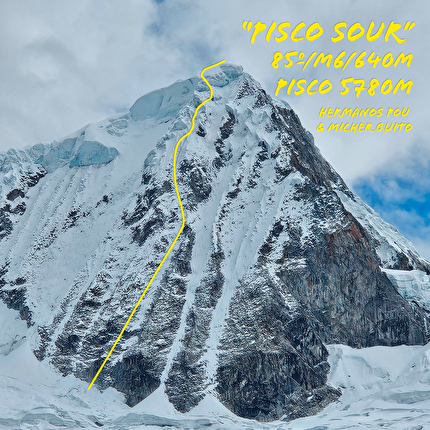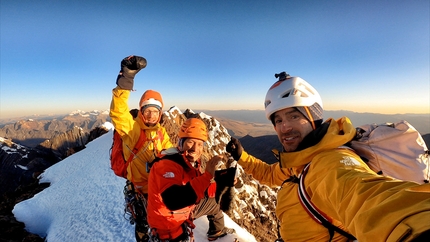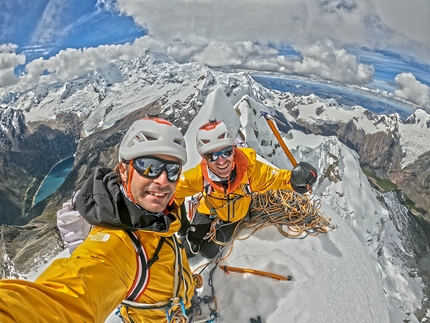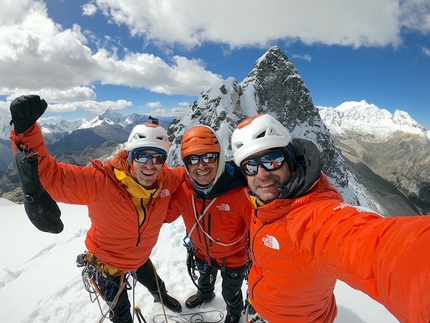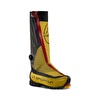Puro Floro added to Nevado Copa in Peru by Pou brothers & Micher Quito
Over a period of four days in mid-July the Basque mountaineers Iker Pou and Eneko Pou and their Peruvian climbing partner Micher Quito made the first ascent of Puro Floro on the southeast face of Nevado Copa in Peru. The 1000m mixed climb breaches difficulties up to M7/95°/A2 and has been described by the brothers as one of their most important achievements to date.
Commenting after the ascent, the Pou stated "It was amazing, diffcult, tough, and challenging. We ended up exhausted, but it was an incredible adventure. We've previously climbed significant routes in this same range, like One Push on Pumahuacanca (5,563m) or Ya Pe Cholo on Ranrapalca (6,164m), but the number of diffcult pitches, the two bivouacs during the ascent, and the altitude of this mountain made this climb very special."
On day 1 the trio made their way to advanced base camp, located next to the glacier at nearly 5,000m, along with expedition cameraman Alexander Estrada. They set off at 4:20am without Estrada towards the base of the mountain and two hours later, as dawn broke, they started climbing. "An imposing 1,000 m wall of rock, snow, and ice loomed over us" they recounted "We quickly covered the first 200 m on steep snow slopes, but then slowed down on very difficult mixed terrain requiring ice axes and crampons. We took turns leading, each climber swapping out when fatigued."
The trio climbed non-stop for 12 hours until they reached a tiny, exposed ledge where they bivied. "The wall" they explained "was so vertical that we hadn't seen another spot like it the entire way." They prepared dinner and then tried, unsuccessfully, to get some rest. Clipped into their harnesses, they "...barely slept: we were very uncomfortable with little space, the precipice right beside us, and our sleeping bags so thin – to lighten our load and carry all the gear ourselves – that they barely provided warmth. We spent most of the night moving our fingers and toes to avoid freezing. Despite the lack of rest, we woke up intact and started a new day at 8:00 AM, hoping it would get us off the wall. We thought the going would get easier, but it remained so vertical that overhanging sections kept slowing us down." The trio persevered and as they gained height the wind picked up and the temperatures dropped. They reached the ridge at 6000m just before 5:00 pm, happy to finally be off the vertical, but still 200m from the summit and with little daylight left.
"We moved as best as we could, breaking trail in deep snow, but we were very tired. An hour later, we realised we couldn't reach the summit without light and exhausted. It was time to decide to bivouac again." Without tents – a choice dictated by the desire to climb as light as possibile - they dug a snow hole and huddled together to conserve what little warmth they had. After what they describe as "by far one of the worst nights of our lives" they woke up at 5:00am, and pushed on to the summit, which they reached at 8:15am. "We hugged at the top, happy. We were physically so worn out from lack of sleep, food, rest, and the continuous effort of three days that if the summit had been a hundred meters higher, we wouldn't have made it."
They soon started descending. Not via their line of ascent, but down the other side "because we didn't feel capable of going down the way we came up. The wall was too big, vertical, and dangerous." What followed was an extenuating descent past a labyrinth of ice towers and crevasses which took them a further 10 hours. At 5:00 pm they were finally off the mountain.



 Copia link
Copia link
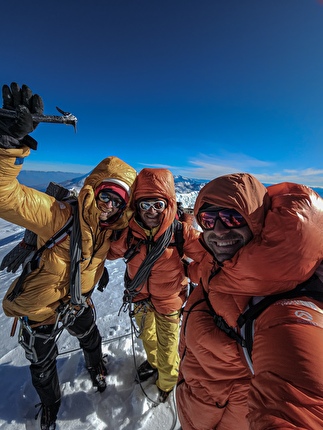

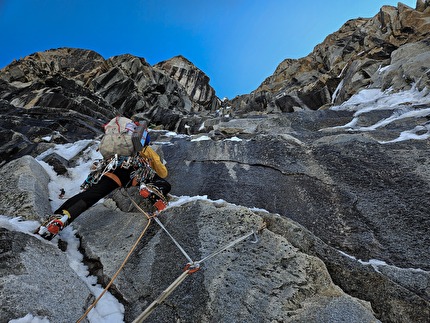
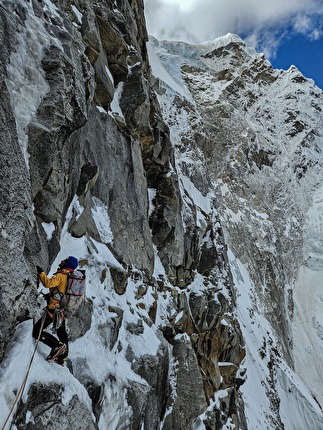
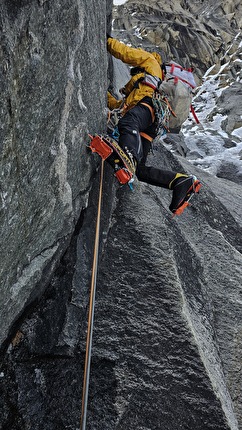
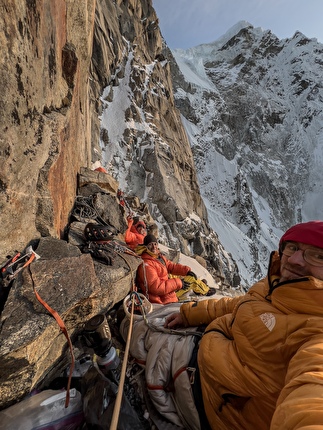
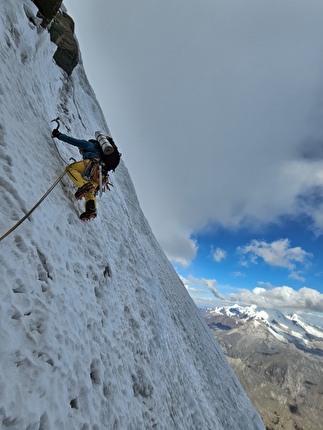
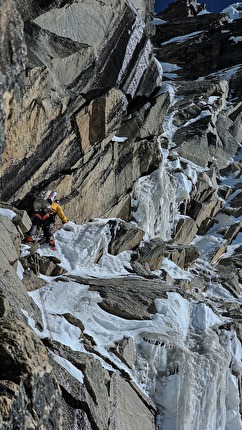
 See all photos
See all photos